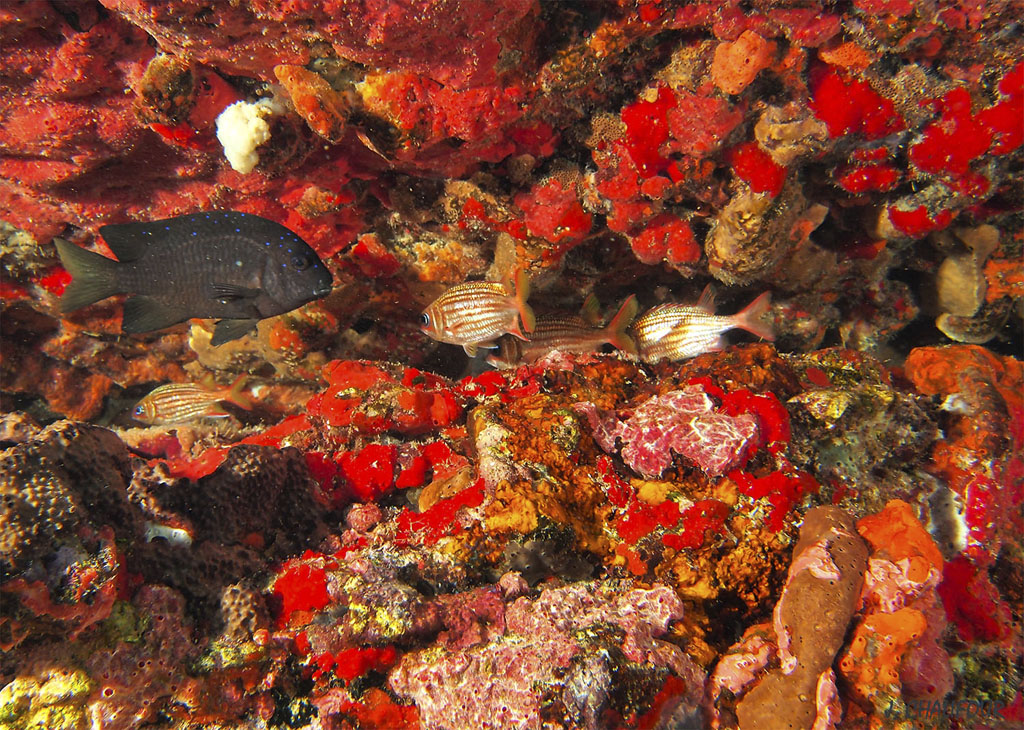The Pacotilles project, whose goal was to collect samples of coral, sponges, algae, and small crustaceans throughout the French Antilles archipelago - including Saint Martin - in order to deepen our knowledge about the underwater biodiversity in that zone, took place in two phases. Phase two, held on May 26 and 27, included participation by scientists primarily interested in sponges, which make up the majority of the Caribbean reefs, as compared to the reefs in the Pacific and Indian Oceans, which are primary coral. A tasty item on the menu for hawkbill turtles and angelfish, some of these sponges tend to develop in darkness, or crevices of the reef, where they are less exposed to predators. To their surprise, the scientists noted that Saint Martin lacks certain species of sponges that are very abundant in Guadeloupe, and on the contrary, has an abundance of calcareous sponges of a larger size than those found in Guadeloupe or Martinique. These researchers did surveys, took photos and collected samples, hoping that their analysis will help explain these differences and maybe reveal the presence of as yet unknown species of sponges, which number in the thousands. The Réserve Naturelle— which replied favorably to the request for authorization for diving and taking samples by the Pacotilles team—will be kept abreast of the results, which will eventually lead to additional protection in certain zones colonized. by these species.
Pacotilles sponges up
Les éponges constituent la plus grande partie des récifs coralliens de la Caraïbe © Julien Chalifour
Important scientific inventory projects are rare, especially in the case of species that are not often studied, such as sponges. But recently, sponges have been of increased interest to the pharmaceutical industry, in that their molecules can block the development of certain diseases.

Sponges make up the majority of the Caribbean reefs © Julien Chalifour

















